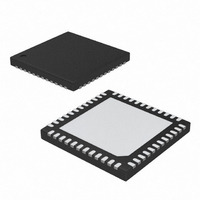MAX19707ETM+ Maxim Integrated Products, MAX19707ETM+ Datasheet - Page 30

MAX19707ETM+
Manufacturer Part Number
MAX19707ETM+
Description
IC ANLG FRONT END 45MSPS 48-TQFN
Manufacturer
Maxim Integrated Products
Datasheet
1.MAX19707ETM.pdf
(37 pages)
Specifications of MAX19707ETM+
Number Of Bits
10
Number Of Channels
4
Power (watts)
84.6mW
Voltage - Supply, Analog
3V
Voltage - Supply, Digital
3V
Package / Case
48-TQFN Exposed Pad
Lead Free Status / RoHS Status
Lead free / RoHS Compliant
10-Bit, 45Msps, Ultra-Low-Power
Analog Front-End
30
Figure 9. Balun Transformer-Coupled Differential-to-Single-
Ended Output Drive for Tx DAC
Figure 10. Single-Ended Drive for Rx ADC
V
V
IN
IN
______________________________________________________________________________________
100Ω
100Ω
100Ω
100Ω
MAX19707
0.1μF
0.1μF
QDP
QDN
REFP
REFN
REFP
REFN
IDN
IDP
1kΩ
1kΩ
1kΩ
1kΩ
R
50Ω
R
50Ω
0.1μF
0.1μF
ISO
ISO
22pF
22pF
22pF
22pF
50Ω
C
50Ω
C
R
R
C
C
ISO
IN
IN
ISO
IN
IN
V
V
OUT
OUT
IAP
COM
IAN
QAP
QAN
MAX19707
Drive the MAX19707 Rx ADC with op amps when a
balun transformer is not available. Figures 10 and 11
show the Rx ADC being driven by op amps for AC-cou-
pled single-ended and DC-coupled differential applica-
tions. Amplifiers such as the MAX4454 and MAX4354
provide high speed, high bandwidth, low noise, and
low distortion to maintain the input signal integrity. The
op-amp circuit shown in Figure 11 can also be used to
interface with the Tx DAC differential analog outputs to
provide gain or buffering. The Tx DAC differential ana-
log outputs cannot be used in single-ended mode
because of the internally generated common-mode
level. Also, the Tx DAC analog outputs are designed to
drive a differential input stage with input impedance
≥ 70kΩ. If single-ended outputs are desired, use an
amplifier to provide differential-to-single-ended conver-
sion and select an amplifier with proper input common-
mode voltage range.
The MAX19707 is optimized to operate in TDD applica-
tions. When FAST mode is selected, the MAX19707 can
switch between Tx and Rx modes through the T/R pin
in typically 0.5µs. The Rx ADC and Tx DAC operate
independently. The Rx ADC and Tx DAC digital bus are
shared forming a single 10-bit parallel bus. Using the 3-
wire serial interface or external T/R pin, select between
Rx mode to enable the Rx ADC or Tx mode to enable
the Tx DAC. When operating in Rx mode, the Tx DAC
bus is not enabled and in Tx mode the Rx ADC bus is
tri-stated, eliminating any unwanted spurious emissions
and preventing bus contention. In TDD mode, the
MAX19707 uses 84.6mW power at f
Figure 12 illustrates a typical TDD application circuit.
The MAX19707 interfaces directly with the radio front-
ends to provide a complete “RF-to-Bits” solution for
TDD applications such as 802.11, 802.16, DSRC, and
proprietary radio systems. The MAX19707 provides
several system benefits to digital baseband developers.
•
•
•
•
•
•
•
Fast Time-to-Market
High-Performance, Low-Power Analog Functions
Low Risk, Proven Analog Front-End Solution
No Mixed-Signal Test Times
No NRE Charges
No IP Royalty Charges
Enables Digital Baseband to Scale with 65nm to
90nm CMOS
Using Op-Amp Coupling
TDD Application
CLK
= 45MHz.
TDD Mode











